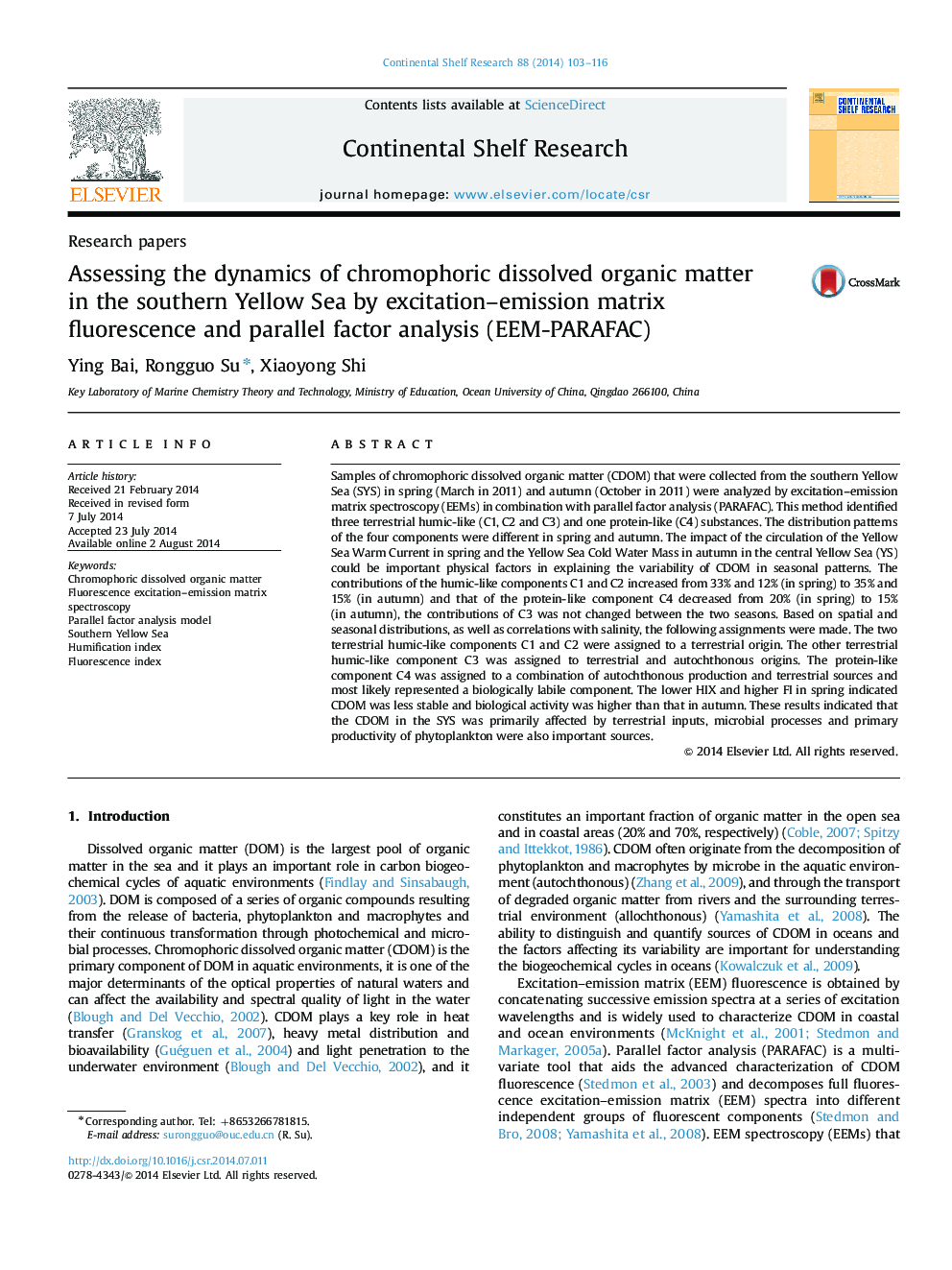| Article ID | Journal | Published Year | Pages | File Type |
|---|---|---|---|---|
| 4531885 | Continental Shelf Research | 2014 | 14 Pages |
•Three humic-like components and one protein-like component were identified.•In northeast and southwest part, CDOM increased about 10–200% in spring.•In most of the studied area, CDOM increased about 10–70% in autumn.•Terrestrial input, hydrodynamics and bioactivities were key impact factors of CDOM.
Samples of chromophoric dissolved organic matter (CDOM) that were collected from the southern Yellow Sea (SYS) in spring (March in 2011) and autumn (October in 2011) were analyzed by excitation–emission matrix spectroscopy (EEMs) in combination with parallel factor analysis (PARAFAC). This method identified three terrestrial humic-like (C1, C2 and C3) and one protein-like (C4) substances. The distribution patterns of the four components were different in spring and autumn. The impact of the circulation of the Yellow Sea Warm Current in spring and the Yellow Sea Cold Water Mass in autumn in the central Yellow Sea (YS) could be important physical factors in explaining the variability of CDOM in seasonal patterns. The contributions of the humic-like components C1 and C2 increased from 33% and 12% (in spring) to 35% and 15% (in autumn) and that of the protein-like component C4 decreased from 20% (in spring) to 15% (in autumn), the contributions of C3 was not changed between the two seasons. Based on spatial and seasonal distributions, as well as correlations with salinity, the following assignments were made. The two terrestrial humic-like components C1 and C2 were assigned to a terrestrial origin. The other terrestrial humic-like component C3 was assigned to terrestrial and autochthonous origins. The protein-like component C4 was assigned to a combination of autochthonous production and terrestrial sources and most likely represented a biologically labile component. The lower HIX and higher FI in spring indicated CDOM was less stable and biological activity was higher than that in autumn. These results indicated that the CDOM in the SYS was primarily affected by terrestrial inputs, microbial processes and primary productivity of phytoplankton were also important sources.
